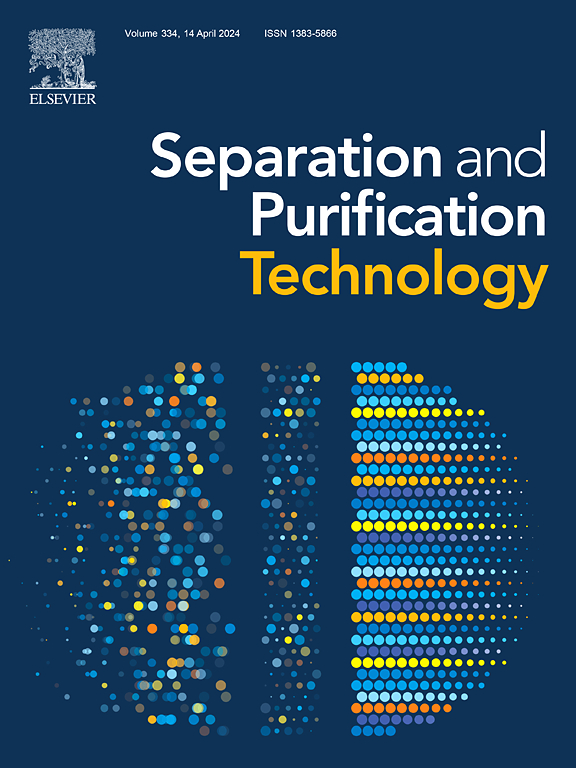膜基流动生物催化中区隔化酶产生手性胺
IF 8.1
1区 工程技术
Q1 ENGINEERING, CHEMICAL
引用次数: 0
摘要
多酶生物催化可以模拟自然代谢途径的合成能力,但面临重大挑战,包括酶固定和辅因子回收的需要,不相容酶的分离,以及减轻产物抑制。在这里,这些限制是通过在流动模式下使用的纳米孔膜内划分酶和辅因子来解决的。两种不相容的酶,一种蛋白酶和一种ω-转氨酶,成功地保留在膜的不同的聚多巴胺/聚乙烯亚胺层中。由外消旋甲酯前体经酶膜生成氨基酸的纯对映体。由于可以精确控制跨膜流速,可以优化停留时间和底物转化,并去除抑制性酮副产物。在最佳条件下,对映体残留量达到97 ± 2 %。通过静电捕获聚电解质层内的吡哆醛-5′磷酸实现了辅因子的保留;一次使用辅助因子可以有效地进行3次循环的流动催化,从而降低了成本。膜内酶和辅因子在流动模式下的区隔化为进行多步生物催化提供了新的途径,特别适合于不相容酶的分离和抑制剂的连续去除,从而产生了一种灵活且易于扩展的方法。本文章由计算机程序翻译,如有差异,请以英文原文为准。


Chiral amines production by compartmentalized enzymes in membrane-based flow bio-catalysis
Multi-enzyme biocatalysis can mimic the synthetic capabilities of natural metabolic pathways but faces significant challenges, including the need for enzyme immobilization and cofactor recycling, separation of incompatible enzymes, and mitigation of product inhibition. Here, these limitations are addressed by compartmentalizing enzymes and cofactors within a nanoporous membrane used in flow mode. Two incompatible enzymes, a protease and a ω-transaminase, were successfully retained within distinct polydopamine/polyethyleneimine layers of the membrane. Pure enantiomers of amino acids were generated from racemic methyl ester precursors via the enzymatic membrane. As the flow rate across the membrane can be precisely controlled, residence time and substrate conversion can be optimized and inhibitory ketone byproducts removed. At optimal conditions, the enantiomeric excess reached 97 ± 2 %. Cofactor retention was achieved by electrostatic trapping of pyridoxal-5′ phosphate within a polyelectrolyte layer of the membrane; a single application of cofactor was effective for 3 cycles of flow catalysis thereby reducing cost. The compartmentalization of enzymes and cofactors within membranes operated in flow mode offers a new pathway for conducting multi-step biocatalysis which is especially suited for the separation of incompatible enzymes and the continuous removal of inhibitors, resulting in a flexible and readily scalable approach.
求助全文
通过发布文献求助,成功后即可免费获取论文全文。
去求助
来源期刊

Separation and Purification Technology
工程技术-工程:化工
CiteScore
14.00
自引率
12.80%
发文量
2347
审稿时长
43 days
期刊介绍:
Separation and Purification Technology is a premier journal committed to sharing innovative methods for separation and purification in chemical and environmental engineering, encompassing both homogeneous solutions and heterogeneous mixtures. Our scope includes the separation and/or purification of liquids, vapors, and gases, as well as carbon capture and separation techniques. However, it's important to note that methods solely intended for analytical purposes are not within the scope of the journal. Additionally, disciplines such as soil science, polymer science, and metallurgy fall outside the purview of Separation and Purification Technology. Join us in advancing the field of separation and purification methods for sustainable solutions in chemical and environmental engineering.
 求助内容:
求助内容: 应助结果提醒方式:
应助结果提醒方式:


